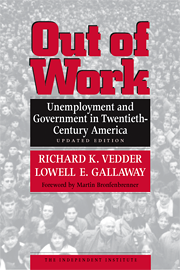Yesterday’s assessment of Jay Bhattacharya’s appointment as director of the National Institutes of Health (NIH) was written before I had seen two excellent weekend Wall Street Journal stories on the Trump appointee. In a news story by Liz Essley Whyte, Bhattacharya indicated he wanted to use his clout to nudge universities into much-needed reform. Dr. Bhattacharya is keenly aware that scientific discovery and advancement require openness to new and often unorthodox ideas. He notes NIH has been giving an increasing proportion of its money to older “establishment” researchers, excluding younger scientists who might have alternative, novel, and occasionally breathtakingly important ideas that could improve our health and well-being.
He is particularly disturbed by actions on many campuses to stifle free expression and debate of less conventional ideas. His suggestion that he might use the freedom of speech rankings of the Foundation for Individual Rights and Expression (FIRE) in assessing research proposals is novel and, in my opinion, brilliant. Prestigious elite schools like Harvard and Columbia do terribly on these rankings relative to other schools, some relatively prestigious—University of Virginia, Georgia Tech—and others somewhat more obscure—Michigan Technological University, Eastern Kentucky University. The suggestion that NIH funds might become a bit more geographically dispersed plays on our nation’s strength of having a relatively decentralized higher education system. Also, more money might go to public universities since only one of the top 20 schools in the FIRE academic freedom rankings—Claremont McKenna College—is a private school. Of the 10 lowest-ranked schools, eight were private. I bet a rigorous analysis of the entire list would show a statistically significant difference in academic freedom between public and so-called “private” schools, which are, in reality, heavily dependent on government funds.
As an aside, I used to be in the college rankings business—founding the Forbes Best College rankings. If I were doing them today, I would try to include something like the FIRE rankings. Students benefit from attending schools where alternative viewpoints are not only tolerated but encouraged.
Being an economist as well as a physician, Dr. Bhattacharya might actually like an idea I have promoted: take costs more into account in assessing research proposals. If two proposals are roughly equally promising on scientific grounds, but one costs $1 million and the second $2 million, give the money to the low-cost provider, incentivizing universities to lower their requested overhead costs. That should work to fund more projects.
The epidemic of fraudulent published research has shaken faith in the integrity of our scientific community and our confidence in their findings. Bhattacharya seems keen on promoting efforts to replicate published results to try to reduce the damage caused by the dissemination of bogus findings. Authors of such fraudulent studies should face long-term—lifetime?—bans from receiving NIH funds.
Tunku Varadarajan did a very lengthy WSJ interview with Bhattacharya, during which he reiterated that the NIH is “the gold standard for institutional support for biomedical scientific research” and that he wants to keep it that way. Economists like Bhattacharya understand opportunity costs, and the enormous NIH emphasis on infectious disease research means that hugely important killers like cancer and heart disease are relatively underfunded. He seems to want a bit more cost-benefit analysis of NIH-funded research, which is a great idea.
Bhattacharya was personally attacked and smeared by a public health establishment that, in retrospect, seemed far more interested in maintaining its own power and prestige than in improving the health of Americans. The anointing of certain public health figures as all-knowing wizards with extraordinary Delphic powers that we mere mortals must accept is wrong medically, politically, and morally. We must respect our great physicians but not allow them to monopolize accepted thoughts or funded ideas.
One thing I fear as Dr. Bhattacharya takes office is attempts to stifle him by his projected boss, Robert Kennedy, Jr., who holds decidedly different views on some issues regarding health and diseases. How much clout will the new director of NIH have? One comforting thought: Bhattacharya has endured brutal internal campus politics at Stanford, and as numerous academics who were also in the political arena—the late Henry Kissinger is a prime example—Washington politics are often child’s play compared to the internal politics of the contemporary American university.













